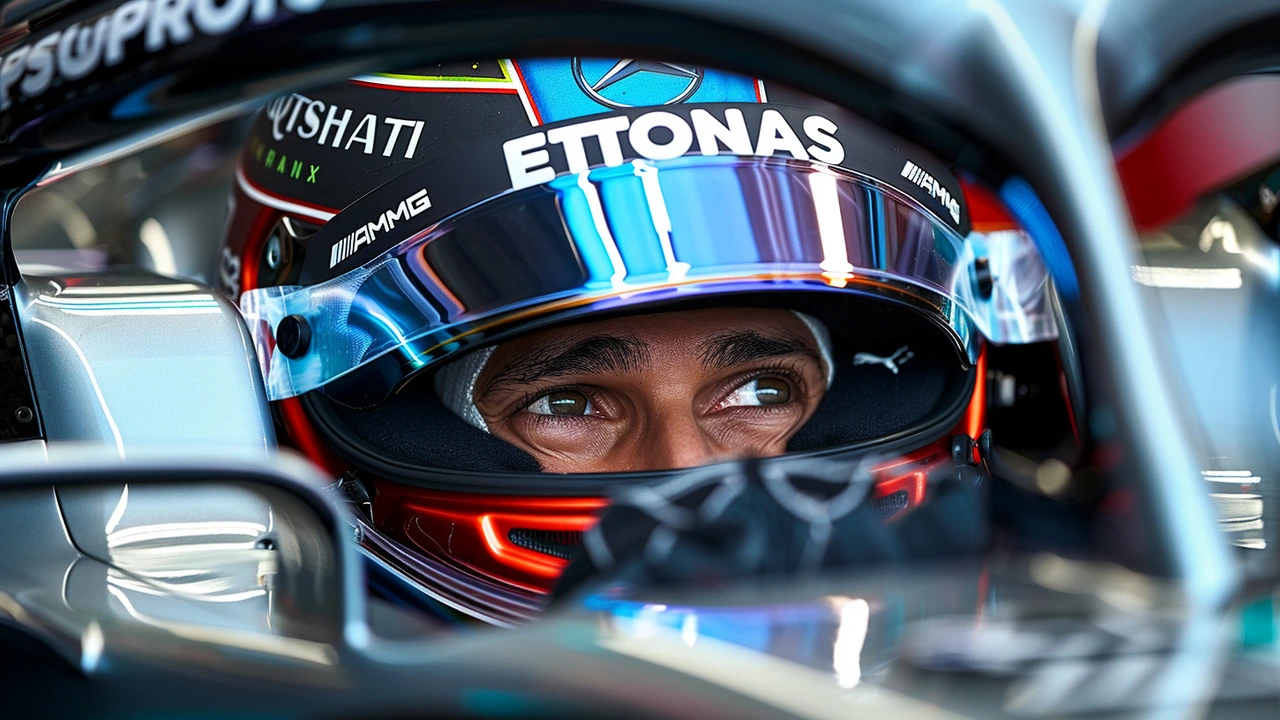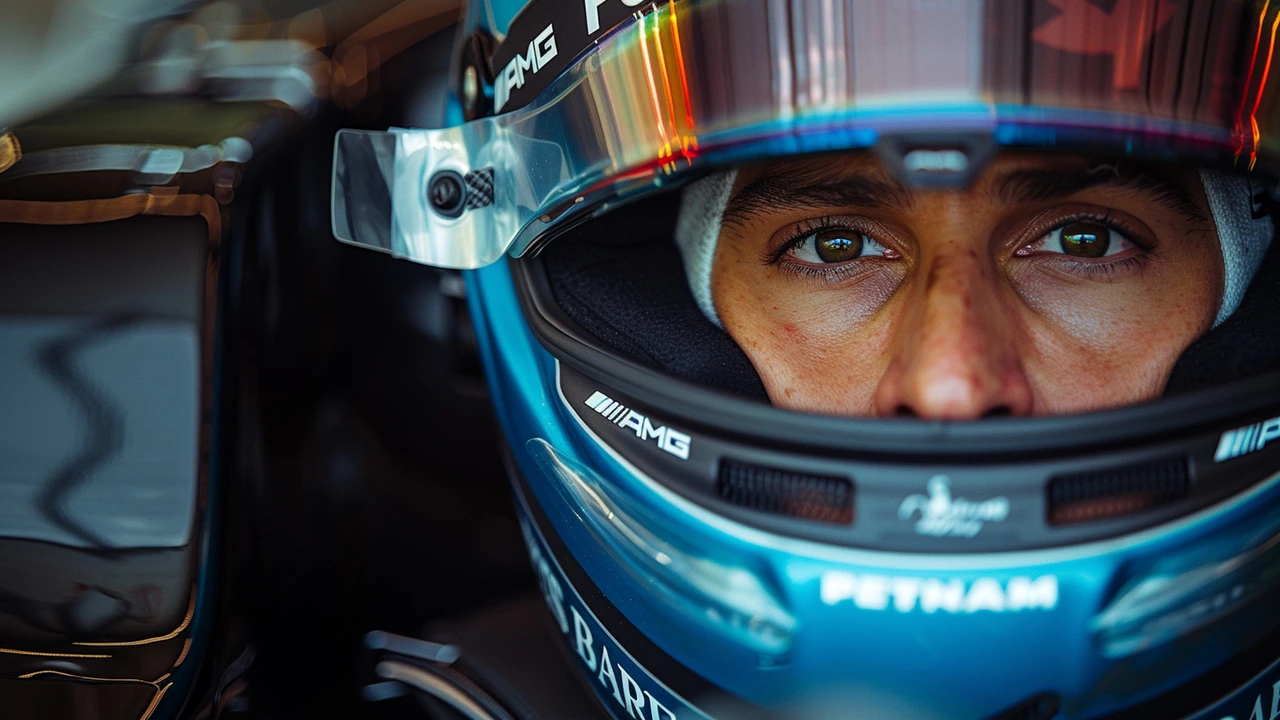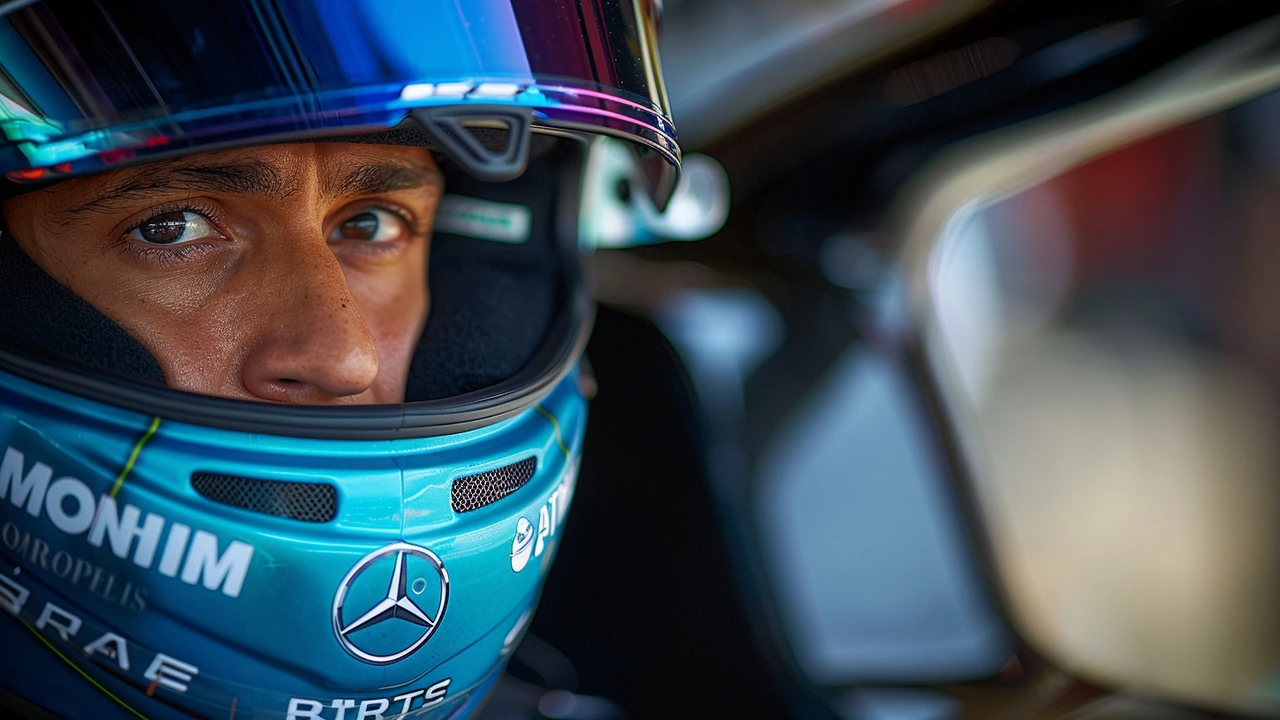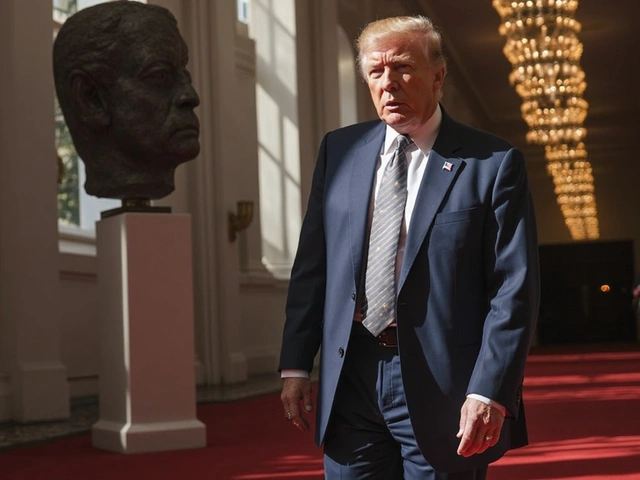George Russell's Safety Concerns with New F1 2026 Regulations
Formula One driver George Russell has voiced his anxiety over the proposed 2026 regulations, describing the resulting potential top speeds as 'crazy'. The plans aim to increase electric energy while simultaneously reducing drag and downforce levels, but Russell fears that this could lead to some unintended safety risks. As a potentially faster car on straights emerges, the balance of cornering speeds and overall vehicle handling could be compromised. This combination, according to Russell, might create a dangerous environment on the tracks.
The new regulations could see cars reaching speeds of up to 360km/h on most tracks. Such high speeds bring a different set of challenges, especially considering the variability of track conditions. Wet tracks and ultra-fast street circuits like Jeddah and Baku would be particularly hazardous. In light of these potential risks, Russell emphasized the importance of safety and urged rulemakers to reconsider whether these higher top speeds are desirable or necessary within the sport. He pointed towards the priority of maintaining good, competitive racing over pure speed metrics.

The Balance between Speed and Safety
While the prospect of faster cars adds to the excitement of the sport, there’s an underlying consensus that it should not come at the cost of driver safety and the quality of racing. Russell stressed that less downforce might mean cleaner air behind the cars, which can foster closer racing. However, he is cautious about how other factors, such as tire performance and vehicle stability, would be managed under the proposed changes. He echoed the sentiment that while cleaner air has its advantages, it must not overshadow the risks involved with significantly higher speeds.
Russell, who serves as a director of the Grand Prix Drivers' Association, shared his concerns over the incremental approach of safety measures in F1 history, often enacted only after significant incidents. This reactive nature of regulation changes raises red flags, as the window to prevent potential mishaps narrows. Hence, forward-thinking and thorough consideration by the FIA and other governing bodies are crucial in shaping these regulations responsibly.
Potential Risks at High Speeds
One of the greatest risks associated with higher speeds is the diminishing reaction times for drivers. With cars traveling at 360km/h, the margin for error becomes exceptionally slim. In adverse weather conditions, such as rain, the risks are exponentially magnified. Tracks like Jeddah and Baku, known for their street circuit layouts and high-speed sections, could transform into precarious battlegrounds under wet conditions or insufficiently managed cornering protocols.
Russell’s caution extends beyond just physical safety. He pointed out that higher speeds might not necessarily lead to better spectator experiences if it translates into fewer on-track battles. The idea of 'good, hard racing' rests on skillful maneuvers, not just velocity. Increased top speeds could inadvertently lead to longer gaps between cars, making races less engaging for fans watching from the stands or on television.
Formula One’s History with Speed and Safety
F1 has a longstanding relationship with pushing the limits of speed, but it is just as well a history paved with safety innovations borne out of necessity. From the advent of crash barriers and the introduction of head-and-neck support systems, changes have often been driven by unfortunate incidents on track. Russell, acknowledging these historical precedents, urged the FIA to pre-emptively address any safety concerns surrounding the 2026 regulations to avoid catastrophic fallouts.
The underlying principle for these new regulations must be to harmonize the quest for speed with a framework that ensures driver safety and maintains the competitive integrity of the sport. As F1 continues to evolve, the end goal should stay rooted in delivering thrilling yet safe racing experiences for drivers and fans alike. This approach requires a delicate balance of engineering prowess, strategic regulation, and a proactive stance on safety across all levels of decision-making.
Russell’s comments come at a time when F1 is undergoing significant scrutiny and introspection. The conversation surrounding the 2026 regulations is not just about making faster, more efficient cars but also about preserving the foundational ethos of competitive motorsport. How the decision-makers balance these two objectives will shape the future of the sport.

The FIA’s Role and Responsibilities
The FIA, as the governing body, has always had a critical role in setting the standards and regulations that govern Formula One. Their decisions carry weight not just in terms of competition but more importantly, in ensuring that the sport evolves safely. With Russell’s insights, it's imperative for the FIA to provide a detailed assessment of how they plan to maintain safety amid the proposed changes.
Investing in comprehensive simulations, engaging with teams for feedback, and potentially recalibrating the balance of technological advancements against on-track experiences might be a few steps the FIA could take. Involving drivers like Russell, who articulate constructive feedback and safety-first perspectives, would be a pragmatic approach. The dialogue shouldn’t be just about top speeds but a holistic view encompassing various facets like track design, car construction, and race management strategies.
Engaging the Fans
Ultimately, the essence of Formula One lies in its die-hard fanbase. Engaging fans in understanding the intricacies behind the changes, and offering transparent communication regarding safety measures, can build trust and sustained interest. Promoting the sport's evolution while ensuring safety will not only enrich the fans' experience but also uphold the long-term integrity of Formula One.
As Russell aptly sums up, delivering exciting yet safe and competitive racing should be at the forefront of any decision-making process. Balancing thrill, speed, and security isn’t just an engineering conundrum. It requires collective wisdom and proactive engagement from everyone involved in the Formula One ecosystem—drivers, teams, governing bodies, and fans.







Bruce Moncrieff
June 8, 2024 AT 17:47 PMWow the idea of 360km/h really cranks the adrenaline up the wall it feels like we’re flirting with the edge of physics the cars will scream down the straights like rockets and any slip could turn into a nightmare we need to keep the safety nets tight and the regulators listening to the drivers
Dee Boyd
June 9, 2024 AT 10:27 AMThe proliferation of hyper‑velocity engineering without commensurate risk mitigation represents a flagrant breach of the sport's duty‑of‑care standards; such reckless pursuits undermine the integrity of competitive motorsport and contravene established safety protocols
Carol Wild
June 10, 2024 AT 03:07 AMOne cannot help but notice the prevailing narrative that equates sheer speed with progress, a notion that has been subtly reinforced by commercial interests seeking to glorify spectacle over substance. The historical arc of Formula One reveals a pattern whereby marginal gains in velocity are celebrated while the accompanying erosion of safety margins is downplayed. It is as if the sport is participating in a collective delusion, convinced that the pursuit of ever‑higher top‑speeds will somehow eclipse the very real dangers that accompany them. This mindset, arguably, stems from an elitist reverence for engineering feats that ignore the human element. Those who champion this direction often conceal their motives behind technical jargon, framing the discussion as inevitable evolution rather than deliberate choice. Yet, beneath the glossy press releases, there lies a covert agenda that privileges sponsorship dollars and media hype over driver welfare. The unchecked enthusiasm for 360 km/h ignores the empirical data that demonstrates a non‑linear increase in accident severity at such velocities. Moreover, the proposed reduction in downforce threatens to destabilize cornering dynamics, creating a scenario where drivers must rely on reflexes that perhaps no longer suffice. The cascade of risks extends to tire degradation, brake overheating, and aerodynamic flutter, each compounding the others in a volatile feedback loop. It would be naïve to assume that incremental safety measures could keep pace with this aggressive trajectory, especially when past reforms have often been reactionary, prompted only after tragic incidents. The specter of a repeat of past calamities looms large, a reminder that progress without prudence is a hollow victory. In this climate, the voices of seasoned drivers like Russell become not merely complaints but urgent warnings that deserve immediate attention. The governance bodies must therefore adopt a precautionary principle, weighing the allure of speed against the immutable laws of physics and human fragility. Failure to do so risks transforming a sport celebrated for its elegance into a reckless showcase of raw power. Thus, the discourse should shift from glorifying top‑speed numbers to fostering a holistic approach that integrates performance with uncompromising safety standards.
Rahul Sharma
June 10, 2024 AT 19:47 PMFrom an aerodynamic standpoint, reducing downforce by 15‑20% while increasing hybrid power output inevitably raises the aerodynamic stall margin, which in turn demands a re‑evaluation of tire compound durability, brake cooling capacity, and suspension geometry; consequently, teams must run extensive CFD simulations, wind‑tunnel testing, and on‑track telemetry analysis to ensure that the vehicle envelope remains within safe operational limits, otherwise the marginal gains in top‑speed will be eclipsed by catastrophic failure modes.
Emily Kadanec
June 11, 2024 AT 12:27 PMi mean honestly the f1 board totally missed the point they think faster is always better but they dont even realize the tracks cant handle that kind of speed its just a recipe for disaster lol
william wijaya
June 12, 2024 AT 05:07 AMIt’s heartbreaking to watch a sport you love get pushed to the brink of danger, especially when the engineering crews are scrambling to patch up safety gaps rather than innovating for the fans, you can feel the tension in the paddock as the teams debate the trade‑offs between pure velocity and survivability.
Lemuel Belleza
June 12, 2024 AT 21:47 PMThese speed talks are just hype, the real action is in the corners and nobody cares about a half‑second edge if it kills the drama.
faye ambit
June 13, 2024 AT 14:27 PMWhen we reflect on the essence of competition, we recognize that balance between exhilaration and responsibility forms the core of any meaningful contest; fostering dialogue that includes drivers, engineers, and supporters can guide the sport toward a harmonious evolution.
Subhash Choudhary
June 14, 2024 AT 07:07 AMyeah man i get the excitement but honestly the streets like jeddah are already mad risky even without extra power, adding more juice feels like adding extra spice to an already hot dish.
Ethan Smith
June 14, 2024 AT 23:47 PMThe governing body should adopt a data‑driven approach, publishing transparent safety assessments and engaging with stakeholder feedback to ensure that any regulatory change enhances both performance and protection.
Evelyn Monroig
June 15, 2024 AT 16:27 PMWhat they don’t tell you is that the 2026 package is a covert test for autonomous weapon systems, hidden behind the glamour of speed, and anyone who doesn’t see the hidden agenda is either naive or complicit.
Gerald Hornsby
June 16, 2024 AT 09:07 AMSpeed is cool but safety wins every time 😊
Hina Tiwari
June 17, 2024 AT 01:47 AMI feel like the comunity needs more open convsersation about how fast is too fast, because at the end of the day we all love the sport and dont want to see any driver get hurt.
WILL WILLIAMS
June 17, 2024 AT 18:27 PMLet’s keep the thrills alive without turning the track into a death zone!